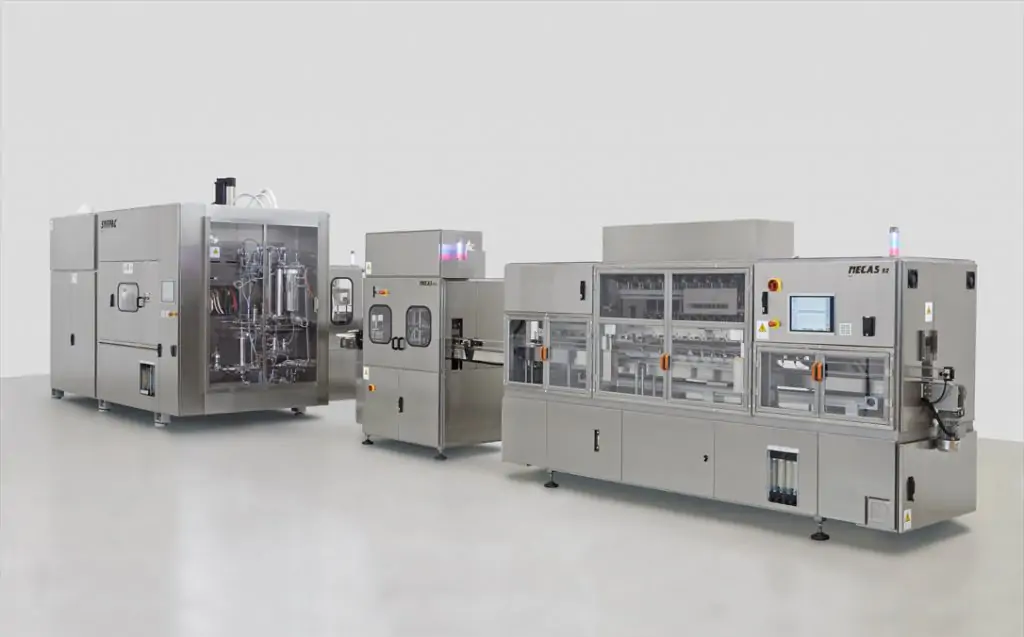The Future of Pharmaceutical Manufacturing: Revolutionizing Efficiency with Cutting-Edge Machines
The pharmaceutical industry is on the cusp of a technological revolution that will forever transform the way medicines are manufactured. With the advent of cutting-edge machines, efficiency in pharmaceutical manufacturing is reaching new heights. These advanced machines combine state-of-the-art technology with precision engineering to streamline the production process, delivering medications faster and at a lower cost.
Utilizing innovative techniques such as robotic automation, artificial intelligence, and machine learning, these machines are capable of performing intricate tasks with unparalleled speed and accuracy. From automated dispensing to high-speed packaging, they are revolutionizing every stage of the pharmaceutical manufacturing process.
By integrating these cutting-edge machines into their operations, pharmaceutical companies can achieve significant gains in productivity, reduce errors, and ensure the highest quality standards for their products. This not only benefits the manufacturers but also has a direct impact on patients, who can now access life-saving medications more quickly and efficiently.
The future of pharmaceutical manufacturing is bright, where advanced machines pave the way for increased efficiency and improved patient outcomes. As the industry continues to evolve, investing in these groundbreaking technologies will be crucial for companies looking to succeed in the competitive landscape of pharmaceutical production.
The need for efficiency in pharmaceutical manufacturing
Efficiency is a crucial factor in pharmaceutical manufacturing. The demand for medications is constantly increasing, and manufacturers need to keep up with the rising expectations while maintaining high quality and safety standards. However, traditional manufacturing processes often suffer from inefficiencies, leading to delays, increased costs, and potential errors. These challenges highlight the need for a more streamlined and efficient approach to pharmaceutical manufacturing.
Current challenges in pharmaceutical manufacturing
The pharmaceutical manufacturing industry faces several challenges that hinder efficiency. One of the major challenges is the complexity of the manufacturing process itself. It involves multiple steps, including raw material procurement, formulation, testing, packaging, and distribution. Each step requires meticulous attention to detail and adherence to strict regulations, which can be time-consuming and prone to errors. Additionally, the industry is heavily regulated, with stringent quality control measures in place, further adding to the complexity and potential bottlenecks in the manufacturing process.
Another challenge is the increased demand for personalized medicine. With advancements in genomics and precision medicine, there is a growing need for medications tailored to individual patients. This requires flexibility in manufacturing processes and the ability to produce smaller batches of specialized medications. Traditional manufacturing methods may not be able to meet this demand efficiently, resulting in delays and increased costs.
The role of cutting-edge machines in revolutionizing efficiency
Cutting-edge machines are playing a pivotal role in revolutionizing efficiency in pharmaceutical manufacturing. These machines leverage advanced technologies to automate and optimize various tasks, reducing reliance on manual labor and minimizing the risk of human error. Robotic automation, for example, allows for precise and repetitive tasks to be performed with unmatched speed and accuracy, ensuring consistent results and reducing the likelihood of errors.
Artificial intelligence (AI) and machine learning algorithms are also being employed to enhance efficiency in pharmaceutical manufacturing. These technologies can analyze vast amounts of data, identify patterns, and optimize processes for maximum efficiency. By continuously learning and adapting, AI-powered machines can make real-time adjustments, leading to improved throughput and reduced waste.
Examples of cutting-edge machines used in pharmaceutical manufacturing
Several cutting-edge machines are already being used in pharmaceutical manufacturing to drive efficiency and productivity. One such example is robotic dispensing systems. These machines can accurately measure and dispense precise quantities of raw materials, ensuring consistency and reducing waste. They can also handle hazardous substances, minimizing risks to human operators.
High-speed packaging machines are another example of cutting-edge technology in pharmaceutical manufacturing. These machines can package medications at incredibly high speeds, significantly improving production rates. They are designed to handle various packaging formats, such as blister packs, bottles, and sachets, ensuring versatility and adaptability in the manufacturing process.
Benefits of using cutting-edge machines in pharmaceutical manufacturing
The use of cutting-edge machines in pharmaceutical manufacturing offers numerous benefits. One of the key advantages is increased productivity. These machines can perform tasks at a much faster rate than traditional methods, reducing production time and increasing overall output. This allows pharmaceutical companies to meet the growing demand for medications more efficiently and cost-effectively.
Furthermore, cutting-edge machines can help improve quality control and ensure consistent product quality. By automating tasks and reducing human intervention, the risk of errors and inconsistencies is minimized. This results in medications that meet the highest quality standards, improving patient safety and satisfaction.
Another significant benefit is cost reduction. Cutting-edge machines can optimize processes, reduce waste, and lower production costs. By automating manual tasks, pharmaceutical companies can also reduce reliance on human labor, resulting in potential cost savings. These cost benefits can be passed on to patients, making medications more affordable and accessible.
Future trends in pharmaceutical manufacturing technology
The future of pharmaceutical manufacturing technology looks promising, with several trends set to transform the industry further. One such trend is the integration of Internet of Things (IoT) technology into manufacturing processes. IoT devices can collect and transmit data, providing real-time insights into manufacturing operations. This enables proactive maintenance, predictive analytics, and continuous process improvement, further enhancing efficiency and reducing downtime.br/>
Another trend is the use of 3D printing in pharmaceutical manufacturing. 3D printing allows for the creation of complex, personalized medications with precise dosages. This technology has the potential to revolutionize drug formulation and enable the production of customized medications on-demand, reducing manufacturing lead times and waste.
Implementing cutting-edge machines in pharmaceutical manufacturing facilities
Implementing cutting-edge machines in pharmaceutical manufacturing facilities requires careful planning and consideration. Companies need to assess their current manufacturing processes, identify areas for improvement, and select the most suitable machines for their specific needs. It is crucial to work closely with technology providers and experts to ensure seamless integration and optimal performance.
Additionally, training and upskilling employees are essential for successful implementation. As machines take over manual tasks, employees need to acquire new skills to operate and maintain the advanced technologies. Providing comprehensive training programs and fostering a culture of continuous learning will empower the workforce and drive successful adoption of cutting-edge machines.
The impact of cutting-edge machines on the pharmaceutical industry
The impact of cutting-edge machines on the pharmaceutical industry is far-reaching. By revolutionizing efficiency, these machines have the potential to transform the entire manufacturing landscape. Pharmaceutical companies can achieve higher productivity, reduce costs, and improve product quality, giving them a competitive edge in the market.
Moreover, patients benefit from faster access to life-saving medications. With increased efficiency in manufacturing, medications can be produced and distributed more quickly, ensuring timely availability to those in need. This can have a profound impact on patient outcomes, particularly in emergency situations or during public health crises.
Conclusion:
The future of pharmaceutical manufacturing is bright, where cutting-edge machines pave the way for increased efficiency and improved patient outcomes. These advanced technologies, such as robotic automation, AI, and machine learning, are transforming every aspect of the manufacturing process, from dispensing to packaging. By embracing these innovations, pharmaceutical companies can overcome current challenges, drive productivity gains, and ensure the highest quality standards for their products. As the industry continues to evolve, investing in these groundbreaking technologies will be crucial for companies looking to succeed in the competitive landscape of pharmaceutical production.
 Skip to content
Skip to content
